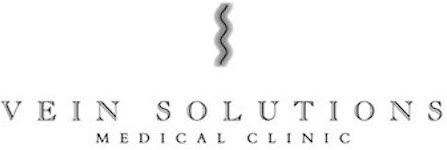The amount of discomfort felt will vary with the individual. The needles used are extremely fine (finer than acupuncture needles) and many are hardly felt at all. The injected vein can sting slightly for short periods of time and represents a tight spasm of the vein. If EVLA™ is used then minimal discomfort is experienced as it is performed under local anaesthetic.
This is a walk-in, walk-out procedure. Most injection treatments take about 30 minutes to perform. Laser treatments and ambulatory phlebectomy take between 60-90 minutes to perform. Following treatment your daily routine should not be disrupted, however heavy physical exercise or workloads should be avoided for about 1- 2 weeks following each treatment.
Vein disease is progressive which if left untreated is likely to become worse with time. Increasing symptoms that can occur with untreated varicose veins include leg tiredness, heaviness, aching, throbbing, restlessness, tingling, itching numbness and swelling. More serious complications such as phlebitis, blood clots, dermatitis, and vein ulcers can develop if varicose veins are left untreated.
Varicose veins and spider veins are not functional, and the blood has already found alternative pathways via healthy veins. Varicose veins are not missed by the circulation, in fact, it improves without them.
Treated correctly, the veins will not come back, as the body has absorbed them. New veins however, may appear with time, as the same causative hereditary factors still exist. These new veins are generally less pronounced and can be easily treated. In some patients periodic maintenance treatment is required to keep new vessel growth to a minimum.
Despite the proven usefulness in the treatment of large varicose veins using EVLT™ the treatment of small leg veins by directing laser light to the skin has thus far been disappointing.
Currently available lasers can be very useful in treating the tiny cosmetic facial veins, but have been significantly less effective on leg veins when compared to expert sclerotherapy. Also, topical laser therapy is far from painless.
Becoming pregnant with existing varicose veins will only lead to the veins becoming significantly worse as the pregnancy develops.
Phlebologists agree that treatment for varicose veins is best performed before or between pregnancies.
The expected cost for treatment varies between individuals and will be provided in writing following your assessment. It is not possible to quote patients over the phone without an initial assessment to determine the exact nature of treatment requirement. Rebate is claimable through Medicare except for the smallest spider veins.
An itemised costing for your proposed treatment will be provided in writing.
All payments are to be made on the day of review/treatment, by cash, eftpos, credit card or cheque. Amex and Diners cards are currently not accepted.
Your treatment protocol, which includes the number of treatments required, will be determined at your first consultation but on average about 4 treatments are required to produce the best results.
Most patients require maintenance treatment periodically to capture small new vein growth before it becomes unsightly.
Sclerotherapy is best avoided when pregnant or breastfeeding. This is advised even though there is no current documented evidence to suggest that sclerotherapy is unsafe during pregnancy or breastfeeding. Vein treatments during pregnancy are not as effective often-producing poor results.
It is recommended that sclerotherapy should be avoided if pregnancy is contemplated within the treatment course. Veins that appear during pregnancy should be treated before the next pregnancy to avoid deterioration with subsequent pregnancies.
The best way to answer this question is to ask what level of Medical Indemnity cover is required to perform such vein treatments. Some of the highest indemnity level of cover is experienced by Neurosurgeons, plastic surgeons and obstetricians which require level 5-6 cover.
Phlebologists such as myself who perform vein treatments are in category level 2 (General Practice Procedural level). This an extremely low level of cover requirement which implies the medical indemnity organisations view these procedures with low level risk.
ABOUT VEIN TREATMENT PRACTITIONERS:
It is advisable to ensure that your treating doctor is a member of the Australasian College of Phlebology and is credentialed to perform the proposed treatment option (Medical Directory – www.phlebology.com.au).
